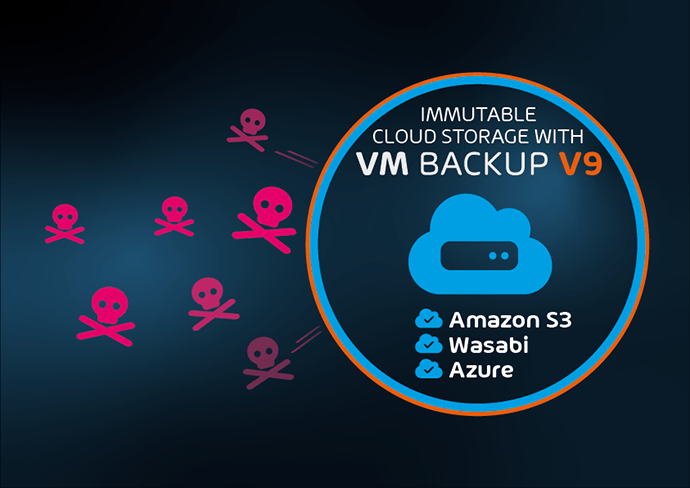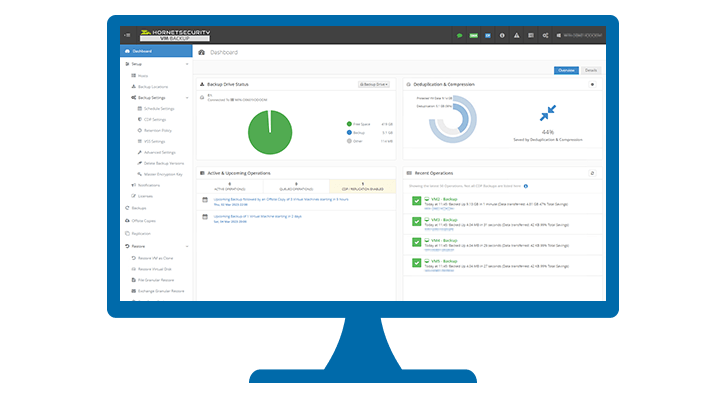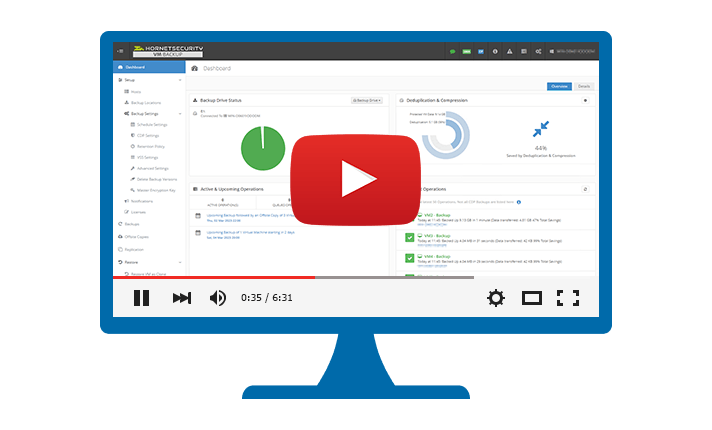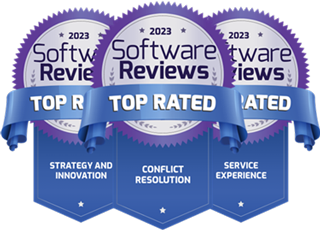What is virtual machine backup and replication for Hyper-V and VMware?
It is essential to have a backup and replication solution in place for Hyper-V and VMware to ensure business continuity, that is, ongoing uptime of systems and continuous access to data and applications. Downtime equates to a loss of time, money and resources for companies and organizations. To counteract this, a robust, reliable backup solution such as VM Backup ensures data protection and a speedy return to 'business as usual' should things go wrong. Having replication in place additionally ensures swift disaster recovery (DR).
To clarify further, let's take a step back: Many businesses and organizations adopt full or partial network virtualization, that is, they run various systems, libraries and programs on virtual machines (VMs). These VMs are hosted on hypervisors. The most popular hypervisors out there are currently Hyper-V and VMware.
As a wealth of data as well as core systems are run on VMs, it is essential for the companies and organizations using them to back up their VMs. This saves an organization time and money as it prevents information loss and downtime should something go wrong with their files (such as corrupted files) and servers – for example, as a result of flooding, fires, damage or disrepair – or even should a user delete essential data from the system.
By taking regular VM backups, the organization can simply restore the data when disaster happens. The more frequent the backups, the more recent the data that can be recuperated. And if you are using an effective solution like VM Backup, then you can also ensure faster recovery times too.
Replication enhances this further as it enables a company or organization to make an ongoing copy of its VMs to a remote site and to switch to that copy if anything goes wrong with the live VMs. VM Backup provides WAN-Optimized Replication functionality so that users can be back up and running in minimal time should disaster strike, providing disaster recovery and peace of mind.
How to use virtual machine backup and replication for Hyper-V and VMware?
When you have a virialized network, with virtual machines (VMs) hosted on Hyper-V and/or VMware hypervisors, you need to use a backup and replication solution to ensure data protection and business continuity. That way, if some of the data stored on your VMs is damaged, deleted or inaccessible for whatever reason, you and your users can rely on the backups you have taken in order to recover and access the missing data and continue working without disruption.
Replication builds on this as through it, if you lose your entire primary and secondary site, you can simply switch to the ongoing (replicated) copy you have made of your live VMs. This ensures an even faster recovery time and even less of a distribution.
To use virtual machine backup, you need to purchase a trusted backup and replication solution like VM Backup and install it on your system according to your needs. VM Backup provides enterprise-level functionality characterized by ease of use, speed, affordability and 24/7 support – and it only takes 15 minutes for you to set it up and take your first backup.
How does virtual machine backup and replication for Hyper-V and VMware work?
In the case of VM Backup, virtual machine backup and replication for Hyper-V and VMware works through a combination of different technologies that provide a layered approach. These include:
- Advanced, enterprise-level functionality – Continuous data protection (CDP); WAN-Optimized Replication; Augmented Inline Deduplication; cloud backup to MS Azure, Amazon S3, and Wasabi; retention policies; GFS archiving; and more
- Scalability – Central management capabilities for larger environments
- Full support for Hyper-V Clusters (CSV & SMB3) and VMware vCenter
- Optimized performance – Fast, small backups, easy on resources
- A host of features such as:
- Hot / Live backups - zero downtime on your VMs during backup
- Backup of all guest Operating Systems - Linux, Unix, old Windows versions, etc.
- Backup of Exchange / SQL VMs - Transaction logs for SQL and Exchange will be truncated
- Change Block Tracking (CBT) - Real-time change tracking for both Hyper-V and VMware
- Backup compression
- Multiple offsite backup locations
- Backup encryption - Military grade 256-Bit AES Encryption
- Host-level concurrency & full control over backup operations
You can then restore your VMs as a full restore or a granular restore, e.g., file-level, Exchange item level and virtual disk restore. Additionally, you can benefit from instant data access through virtual disk mount and boot from backup.
Its replication for Hyper-V and VMware works by taking a copy of your virtual machines in an ongoing way to a remote offsite location. This provides ultimate business community as it means you have a constant disaster recovery (DR) site up and running, that you can switch to in seconds should the need arise. No restore time is required so you are up and running in no time at all.
How to install virtual machine backup and replication for Hyper-V and VMware?
Before you can install virtual machine backup and replication for Hyper-V and VMware, you first need to select the solution that is right for you.
Choose a reputable VM backup solution that is fast and easy to set up and use, without draining your budget or your resources. Check that it has the right functionality and robustness to ensure secure, reliable, swift and easy data recovery should a disaster occur. Another important factor is reliable vendor support that you can count on when you're facing a critical data loss incident. The best way to test out these variables is to install the VM backup software as a trial before you take the plunge and purchase the solution for your company or organization.
One solution that amply meets all these requirements is VM Backup and you can try it for free for 30 days with no commitment. That way, you can see for yourself how easy it is to install it on your systems and run it: You will be able to take your first backup in 15 minutes. That's hard to beat!
What are the advantages to virtual machine backup and replication for Hyper-V and VMware?
The advantages of using virtual machine backup and replication for Hyper-V and VMware include:
- Business continuity
- Data protection
- Disaster recovery
With a solid VM backup, recovery and replication solution installed on your network, you can protect your data if anything happens to your VMs such as:
- Corrupted files
- Deleted files
- Inaccessibility
- Natural disasters, such as hurricanes and flooding
- Fire
- Power outages in one location
- Ransomware or malware attacks.
In all these cases and more, by having a backup of your VMs and/or running a replicated copy of your VMs, then you can recover the missing or damaged data quickly and without fuss. That way, your team can continue working without delay or data loss.





 Deutsch
Deutsch Français
Français Italiano
Italiano Nederlands
Nederlands Español
Español































































